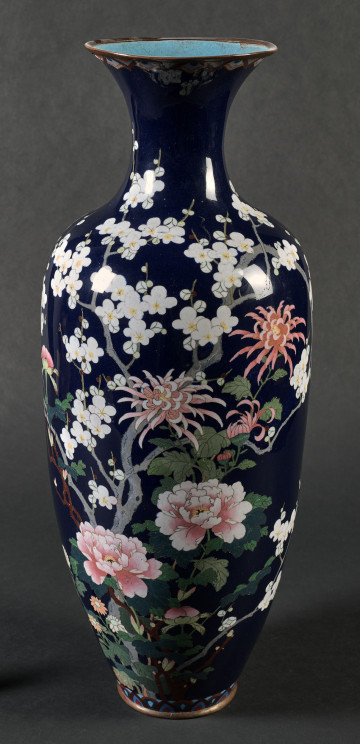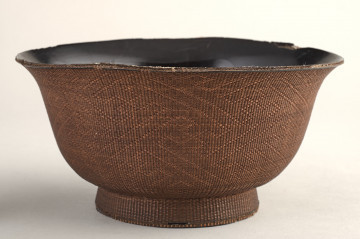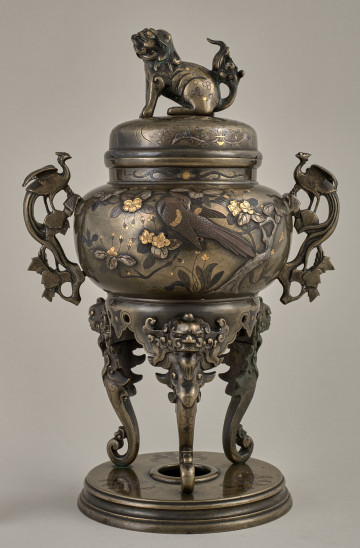
Vase
19th (?) century
Castle Museum in Łańcut
Part of the collection: Orient
A censer in the shape of a standing crane, cast in bronze, chiselled. The bird’s tall legs indicate a resemblance to a great bustard, and it holds a twig in its beak. It stands on a semicircular base decorated with a carving depicting waves. The head is shown in three/quarters, tilted. On its back – on the folded wings there is a circular opening, decorated with laurel leaves. China, 19th century. A censer is a vessel for burning incense or solid perfume. These vessels varied considerably in size, form and construction material in different cultures or countries. They have been used in typical applications since ancient times. They were used to cleanse the air of “pathogens” during an epidemic threat, perfuming spaces, and even measuring time during rituals and ceremonies – the rate of burning of conical incense was measured. Incense is burned by placing it directly on a source of heat or a hot metal plate in the censer. Small concave charcoal briquettes were sold for use with incense to be used at home. A corner of the briquette was lit, the briquette was placed in the censer, and the flame was extinguished. After the glowing embers encompassed the entire briquette, it was ready for incense to be placed on it.
Author / creator
Dimensions
height: 49.5 cm
Object type
Orient
Technique
fine finished cast
Material
bronze
Creation time / dating
Creation / finding place
Owner
Castle Museum in Łańcut
Identification number
Location / status

19th (?) century
Castle Museum in Łańcut

17th-18th (?) century
Castle Museum in Łańcut

2nd half of the 19th century
Castle Museum in Łańcut
DISCOVER this TOPIC
Museum of King Jan III's Palace at Wilanów
DISCOVER this PATH
Educational path